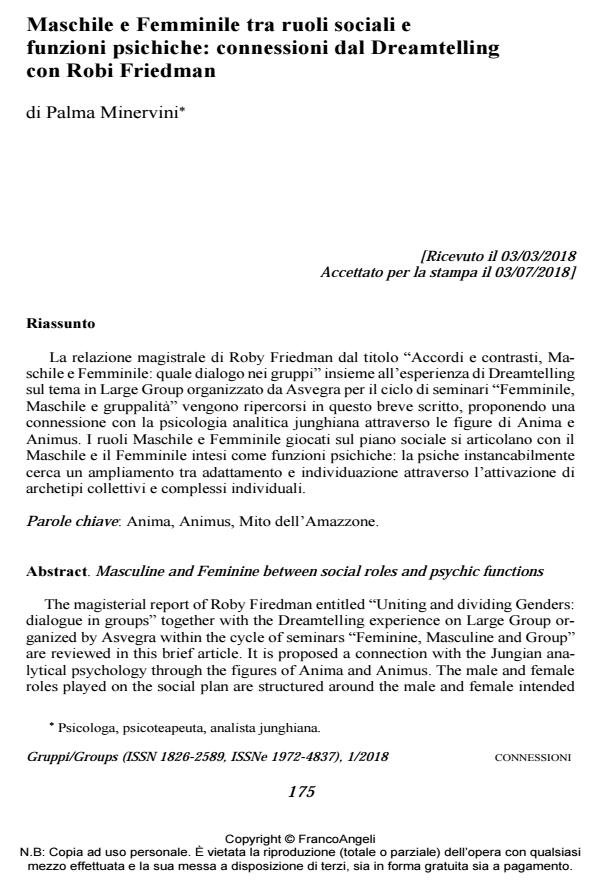Masculine and Feminine between social roles and psychic functions
Journal title GRUPPI
Author/s Palma Minervini
Publishing Year 2019 Issue 2018/1
Language Italian Pages 6 P. 175-180 File size 125 KB
DOI 10.3280/GRU2018-001013
DOI is like a bar code for intellectual property: to have more infomation
click here
Below, you can see the article first page
If you want to buy this article in PDF format, you can do it, following the instructions to buy download credits

FrancoAngeli is member of Publishers International Linking Association, Inc (PILA), a not-for-profit association which run the CrossRef service enabling links to and from online scholarly content.
The magisterial report of Roby Firedman entitled "Uniting and dividing Gen-ders: dialogue in groups" together with the Dreamtelling experience on Large Group organized by Asvegra within the cycle of seminars "Feminine, Masculine and Group" are reviewed in this brief article. It is proposed a connection with the Jungian analytical psychology through the figures of Anima and Animus. The male and female roles played on the social plan are structured around the male and female intended as psychic functions: the psyche incessantly seeks a widening between adaptation and individuation through the activation of collective archetypes and individual complexes.
Keywords: Anima, Animus, Amazon’s Mith.
Palma Minervini, Maschile e Femminile tra ruoli sociali e funzioni psichiche: connessioni dal Dreamtelling con Robi Friedman in "GRUPPI" 1/2018, pp 175-180, DOI: 10.3280/GRU2018-001013